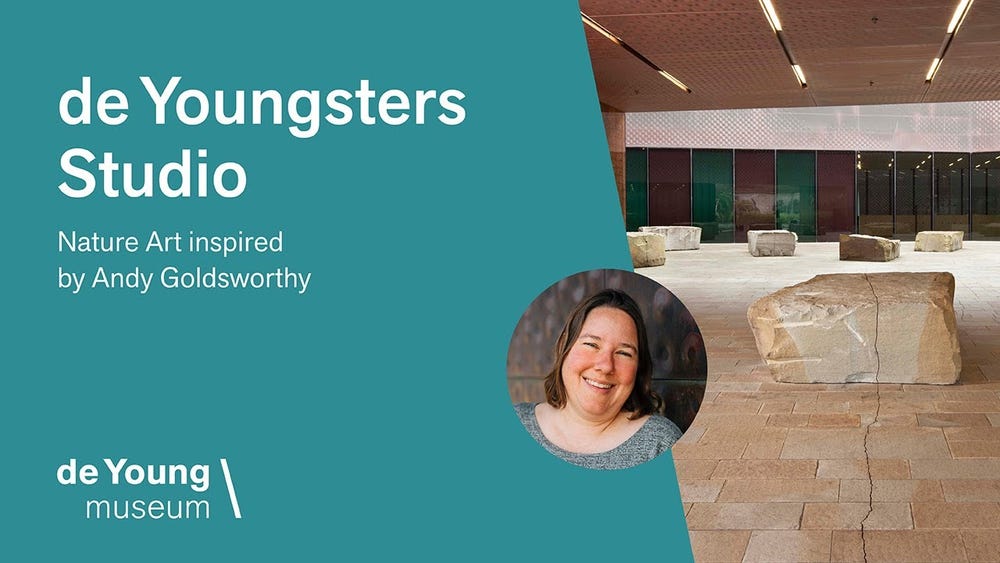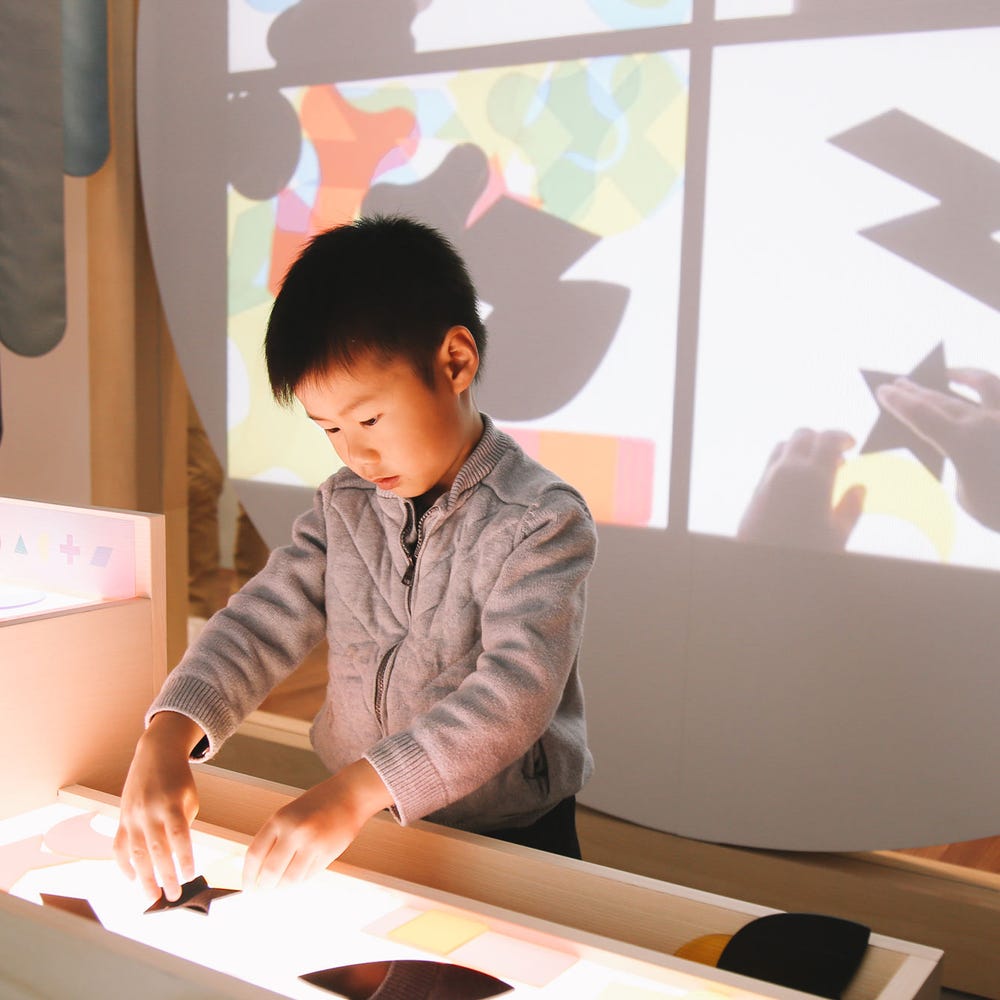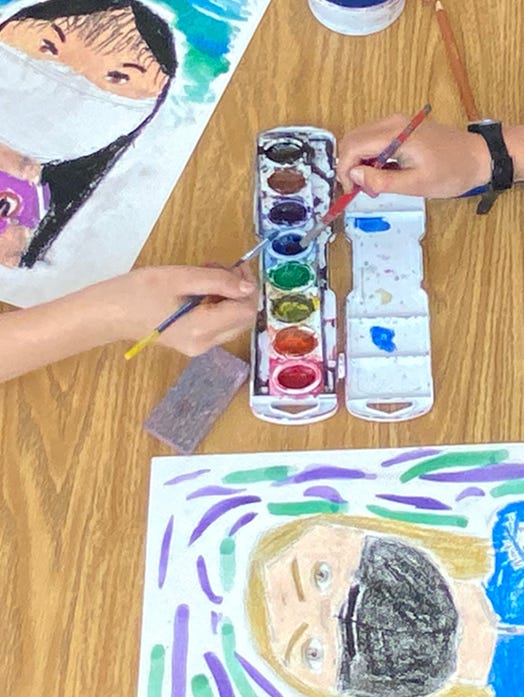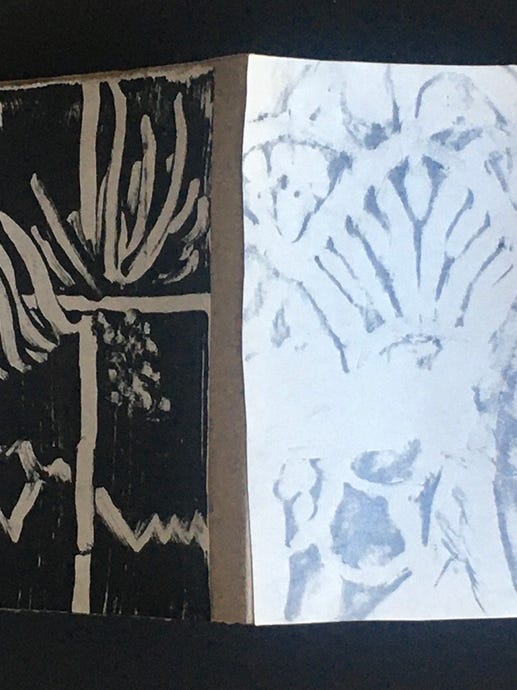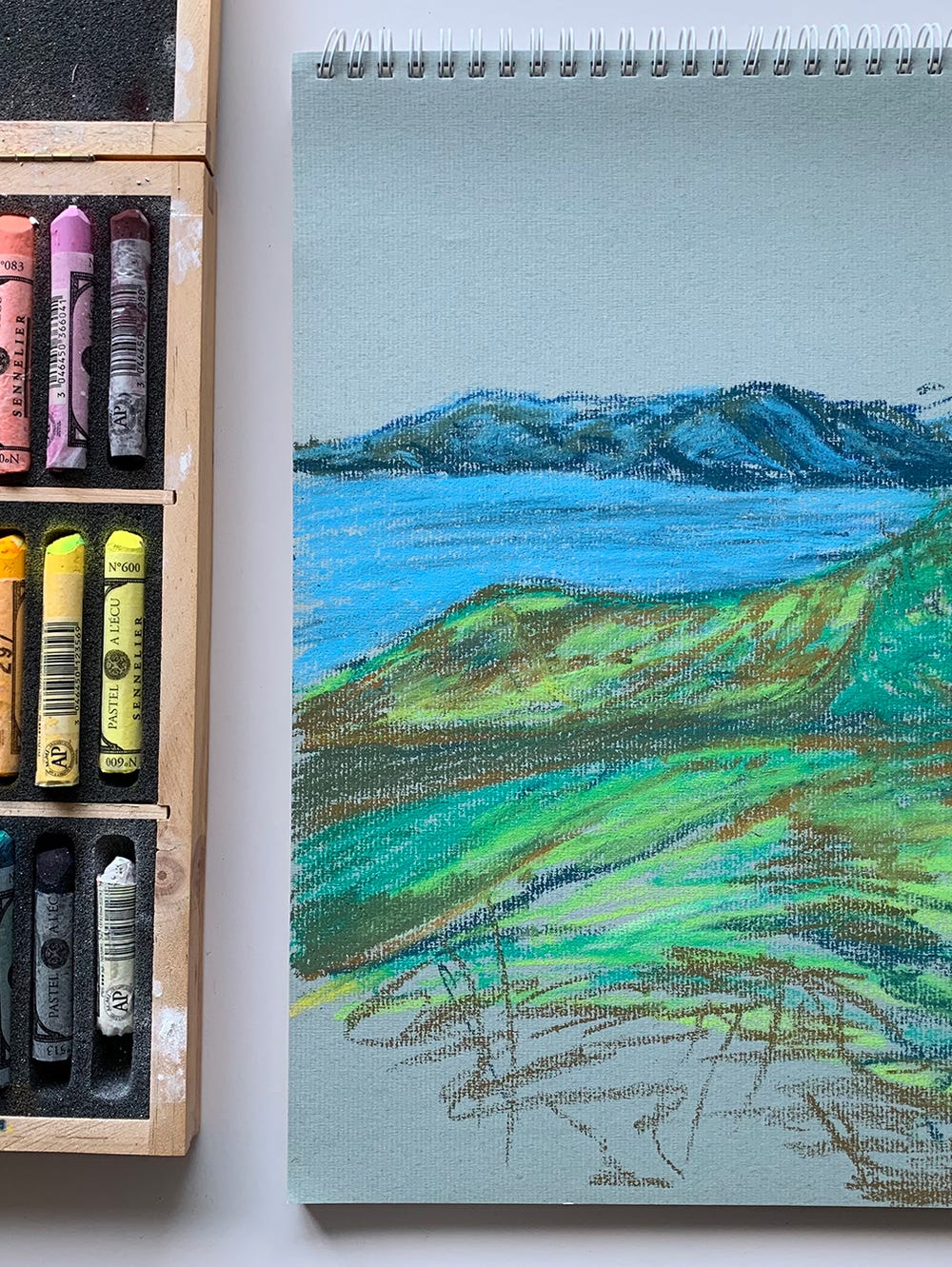de Youngsters Studio: Nature Art Inspired by Andy Goldsworthy
By Jill McLennan, Senior Teaching Artist
August 6, 2020
Together, let's collect and examine materials from a favorite place in nature. Visit a natural area near your home and look around at what natural materials are available there. Without picking any living plants, collect about 10 – 20 natural materials from one area. Then try out this creative project, inspired by Andy Goldsworthy's Drawn Stone (2005).
Questions to Consider
- What materials did you collect?
- What do you notice about the materials that you collected (shape, size, texture, or similarities)?
- What can these materials teach you about the environment where they were collected?
- How can we create art with a message using these materials?
Materials
- Natural materials collected from nature ( 10 – 20 pieces)
- Cardboard base
- Paper
- Pencil or pen
Step 1: Spread out all the natural materials on the cardboard and arrange them using one of the following Elements of Art as a guideline for your organization of the materials. For example, you may choose to arrange the items by similar shapes or arrange them into a created shape.
- Line
- Shape
- Color/Value
- Texture
Step 2 (Documentation and Questioning): Take a picture or make a sketch of your arrangement, then share it with someone in your family or household. Ask yourself or someone else these questions:
- What do you notice about this arrangement?
- What is surprising about this composition?
- What would you like to do next?
Step 3: Next, rearrange the materials using one of the following Principles of Design. For example, make an arrangement of objects that feels balanced from left to right and is symmetrical or the same on both sides.
- Balance/Symmetry
- Movement
- Emphasis
- Pattern
Step 4 (Documentation and Questioning): Take a picture of your arrangement, make a list of words that come to mind when you look at it, share it with someone in your family or household, and ask yourself or someone else these questions:
- What do you notice about this arrangement?
- What is surprising about this composition?
- What would you like to do next?
Step 5: Rearrange your objects one final time, taking into account your previous arrangements and decisions and the natural area where you found your items. Think about how your work can be a metaphor for a larger idea about the environment.
- Why am I making this?
- What are these things telling me about my environment?
- What is my message?
Step 6: Using your paper and pencil, write a title for your piece that helps define its meaning, and/or write a sensory poem about the composition. A Sensory Poem uses your five senses to describe an experience or a place. Take a photo of the composition and share with someone.
Sensory Poem:
I see ______.
I hear ______.
I smell ______.
I taste_______.
I feel ______.
Reflection Questions
- What elements of art or principles of design did you use in your final composition?
- What did you learn about your environment from using materials that you collected?
- How is your artwork a metaphor for a larger idea about the environment?
Final Steps
Consider returning the objects back to nature where you found them. It is important to put them back in nature because some of them, such as pine cones, are or contain seeds that can grow into new trees.
Share
We would love to see what you create! Email pictures of your artwork to families@famsf.org or tag us on any social platform with #deyoungsters.
